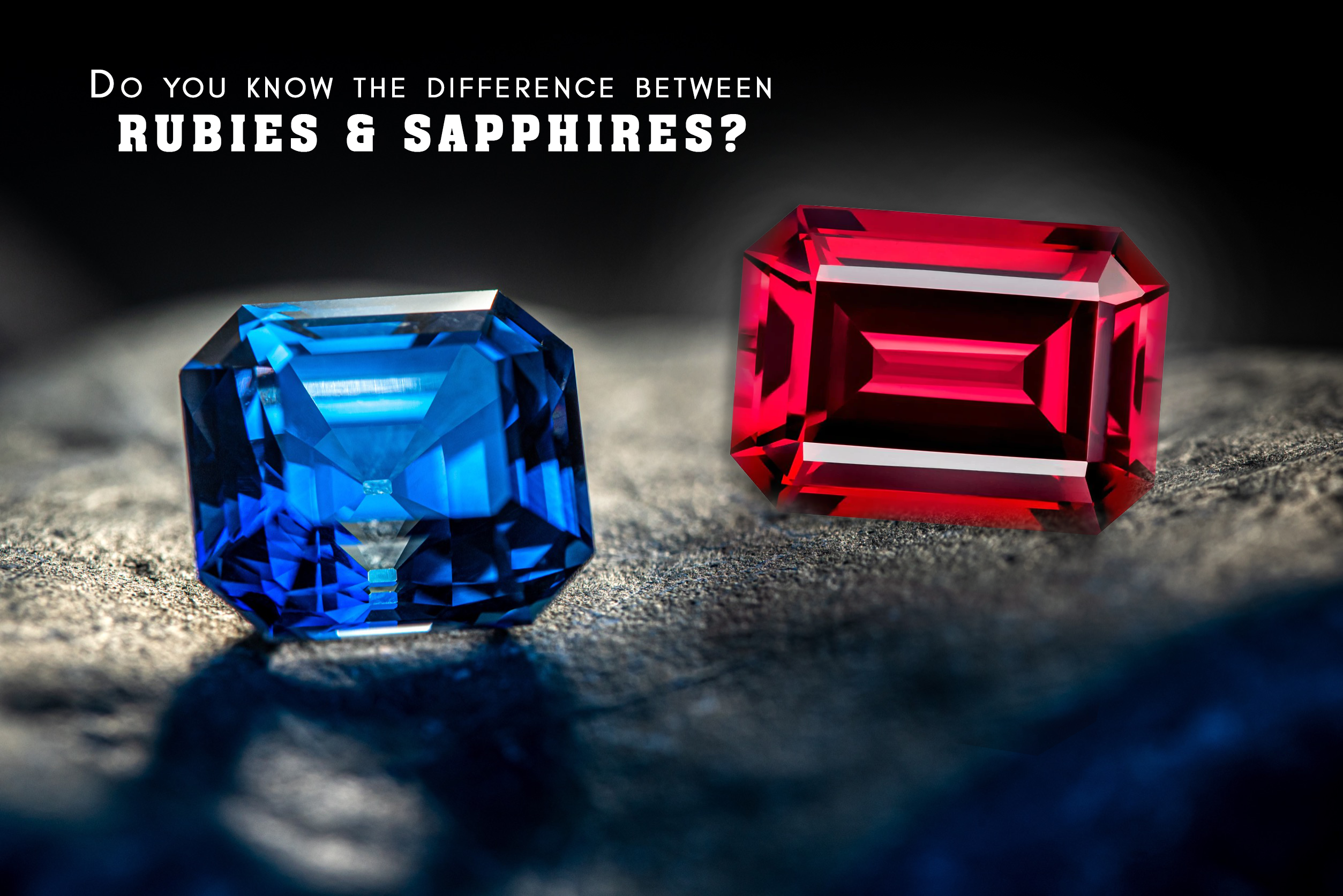What is the difference between Sapphire and Ruby?
Sapphire is Septembers Birthstone, and is known for its beautiful blue hue. What most people don’t know is Sapphire comes in a rainbow of colors, Blue, Yellow, Pink, Purple, orange and even white. The intensity of these colors range from vibrant to those that are of a softer tone. Sapphires have a value of 9 on the Mohs hardness scale. The scale rates the hardness of gemstones and minerals using a range of 1-10 with 10 being the hardest. So with a rating of 9, sapphire is wonderful choice for every day wear.
Sapphire is formed over millions of years in the earth and can be found in recrystallized limestone or metamorphic rocks that contain less silica and more Aluminum. Sapphire is part of the Corundum family of gems and shares its mineral structure and chemical composition with the Precious Gem, Ruby.
So, if Sapphire and Ruby are both considered Corundum, what makes a Ruby a Ruby and a Sapphire a Sapphire.?
Well, Sapphire is formed in igneous rocks, as the liquid magma cools and intense pressure occurs the barrel shape crystal will form, The crystal itself will be white but as other elements are introduced, colors will be created. The more iron/titanium in the crystal, the darker the blue in the sapphire.
Sapphire deposits can be found in Myanmar, Sri Lanka, Madagascar, Thailand, China, Australia, Nepal, Nigeria, Pakistan and Kashmir as well as Montana.
As Ruby is also part of the Corundum family it also registers a 9 on the Moh’s hardness scale and is practical for everyday wear.
Forming under the same conditions as a sapphire, this version of Corundum is classified as Ruby only when it shows a certain amount of Chromium. Ruby needs to display a certain shade of red to be classified as a ruby. For example, if it’s a paler or vivid pink its will not be classified as a ruby but instead a pink Sapphire. Another example includes, if iron is present with chromium in the specimen, it will turn the gem orange and result in the classification of an orange sapphire! These classifications are determined by professional gemologists.
Rubies can be found in Burma (Myanmar) They are also mined in Afghanistan, Australia, Cambodia, India, Madagascar, Malawi, Mozambique, Pakistan, Sri Lanka, Tanzania, Thailand, the United States, and Vietnam.
Ruby or Sapphire both wonderful choices for all types of jewelry and need very little maintenance. However, it is still recommended to have your gems and settings checked and cleaned every 6 months, especially if you are wearing them every day.

